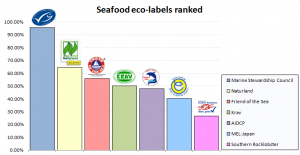While “certified green labels” used as a mark of sustainable practices are familiar sites on many of the items we purchase, it is important to note that often these labels are used as marketing tools. Theoretically, eco-labels were “designed to elevate products with higher environmental protection standards than the government requires for the status quo.” [1]
Perhaps a major issue with “certified green labels” is that their profits drive approval. Over the past few years, we have witnessed an increased market demand for “green” or “sustainable” products. Any business that promotes a product as green or certifies a product as sustainable potentially stands to make a huge financial gain by maintaining recognition in its industry as a “green” company or by consistently introducing new “sustainable” products into the market. Additionally, increasing demand for green products creates the untended result of lowering standards for the award of green labels so as to fulfill the demand, thereby saturating the market with suspect products.
Overall, enforcement of green standards after a green label is awarded often is insufficient. Once certifying bodies set conditions for labels of sustainability, they often fail to ensure that the companies who receive the label awards maintain the standards upon which the award was made initially. Consequently, more regulation is needed to ensure that items labeled “green” do, in fact, meet the acceptable requirements for that designation.
Green Company Does Not Equal Green Products
Traditionally, some companies are designated as green secondary to sustainable business practices. These businesses may use recycled paper and other office products, such as printer cartridges or use LED lights. They may strictly enforce reduction of electricity usage by requiring employees to turn off lights in rooms not in use. They may install low flow toilets to reduce water use, These companies often provide reusable eating utensils in lunch rooms, along with refrigerators, microwaves, toasters and ovens so that employees can bring lunch. Many urban businesses offer incentives, such as train or subway vouchers to offset a portion of commuting expenses for employees who take public transportation. All of these ideas are good and sustainable; however, they do not translate to automatic assumptions that the products produced by these companies are green. In such instances, touting recognition as a “green” business then becomes a marketing tool and a case of bait and switch.
Let The Buyer Beware
A savvy consumer must separate the company image from the actual products. Until such time as there is adequate regulation in eco-labeling, the burden of proof falls on the consumer. The first step to take to recognize true product sustainability versus the use of “green” label as a marketing ploy is to learn about product certification standards.[2] When shopping for any items, please know that a higher priced product (which often is the case with “green” products) is no guarantee of quality of sustainability.
A good source to begin with to examine green standards for products is the Environmental Protection Agency.[3] Here the reader can find general information on product standards, as well as links to standards, with accompanying “data, analysis and expert judgment” to aid in design and purchasing decisions. There also is a Database of Environmental Information For Products And Services, as well as a Federal Green Construction Guide.
Concern With Private Sector Labels
In addition to some government regulations for “green” labels, many private concerns have taken it upon themselves to award certifications for products they consider to be green. Unfortunately, there are no universally accepted guidelines for these awards. Ultimately, the market becomes inundated with privately “certified green” products, some of which have contradictory claims. Actions like these tend to frustrate and overwhelm consumers, who then abandon their efforts to use sustainable products and return to using familiar brands.
The Goal Of Transparency In Labeling
Product labeling is a difficult process due to lack of uniform guidelines and regulations. Until transparency in labeling is achieved, deciphering the truth in labels for certified “green” products will be a challenge. Aside from contradictory requirements of private eco-labeling groups, consumers must be cautious of marketing ploys that tout products as sustainable when that simply is not the case.
With continued research, support and lobbying efforts by proponents of the green movement, uniform guidelines for green certification resulting in reliable labeling, along with penalties for false advertising, will become a reality one day. To have the tools available to make informed decisions when purchasing green products is to live green, be green.
_________________
[1] http://www.opb.org/news/blog/ecotrope/buyer-beware-eco-labels-are-sticky.
[2] http://www.sba.gov/content/green-certification-and-ecolabeling.
[3] http://www.epa.gov/epp/pubs/guidance/standards.htm#e





